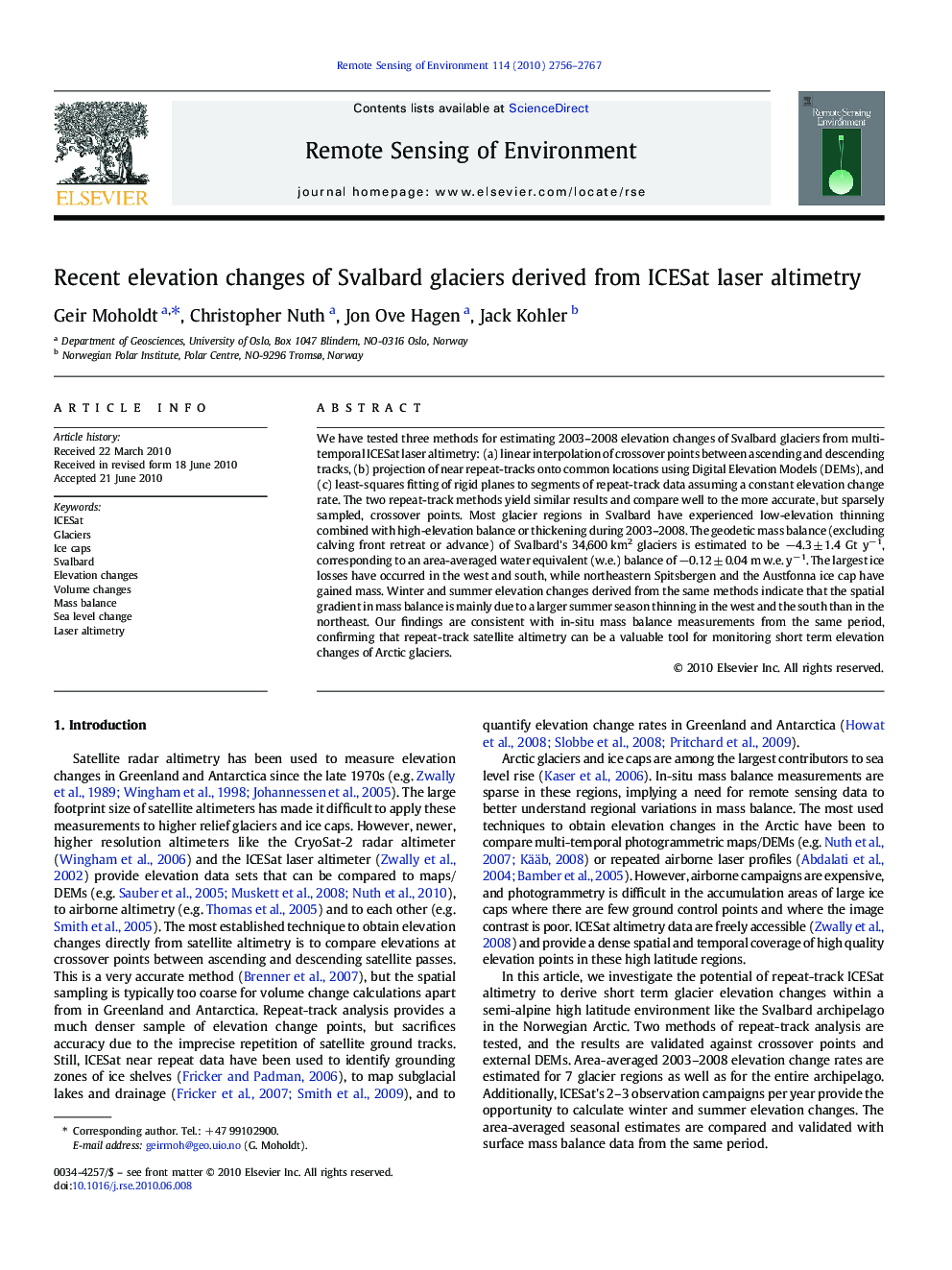| Article ID | Journal | Published Year | Pages | File Type |
|---|---|---|---|---|
| 4459846 | Remote Sensing of Environment | 2010 | 12 Pages |
We have tested three methods for estimating 2003–2008 elevation changes of Svalbard glaciers from multi-temporal ICESat laser altimetry: (a) linear interpolation of crossover points between ascending and descending tracks, (b) projection of near repeat-tracks onto common locations using Digital Elevation Models (DEMs), and (c) least-squares fitting of rigid planes to segments of repeat-track data assuming a constant elevation change rate. The two repeat-track methods yield similar results and compare well to the more accurate, but sparsely sampled, crossover points. Most glacier regions in Svalbard have experienced low-elevation thinning combined with high-elevation balance or thickening during 2003–2008. The geodetic mass balance (excluding calving front retreat or advance) of Svalbard's 34,600 km2 glaciers is estimated to be −4.3 ± 1.4 Gt y−1, corresponding to an area-averaged water equivalent (w.e.) balance of −0.12 ± 0.04 m w.e. y−1. The largest ice losses have occurred in the west and south, while northeastern Spitsbergen and the Austfonna ice cap have gained mass. Winter and summer elevation changes derived from the same methods indicate that the spatial gradient in mass balance is mainly due to a larger summer season thinning in the west and the south than in the northeast. Our findings are consistent with in-situ mass balance measurements from the same period, confirming that repeat-track satellite altimetry can be a valuable tool for monitoring short term elevation changes of Arctic glaciers.
